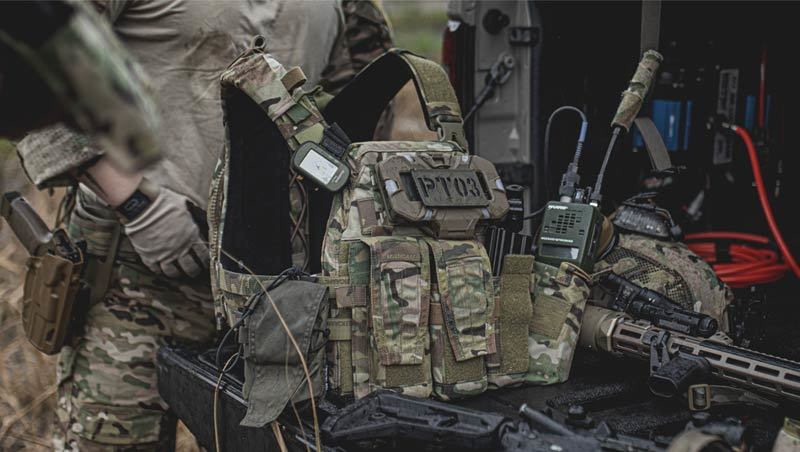Improving the durability and protective performance of military textiles|Functional finishing solutions for military textiles
Release time:
Oct 31,2023
Military textiles include uniforms, gowns, work clothes and protective clothing. Regular clothes and dresses are used for training, daily life or important ceremonial occasions. Work clothes (such as anti-static clothing in oil depots, fire-proof clothing on ships, etc.) and protective clothing (such as explosion-proof clothing, flame-retardant combat clothing, etc.) pay more attention to fabric functionality and protective effects. Therefore, military textiles can be divided into conventional There are two categories: textiles and special textiles.
1. Categories and uses of military textiles
Military textiles include uniforms, gowns, work clothes and protective clothing. Regular clothes and dresses are used for training, daily life or important ceremonial occasions. Work clothes (such as anti-static clothing in oil depots, fire-proof clothing on ships, etc.) and protective clothing (such as explosion-proof clothing, flame-retardant combat clothing, etc.) pay more attention to fabric functionality and protective effects. Therefore, military textiles can be divided into conventional There are two categories: textiles and special textiles.
1) Conventional military textiles
Conventional textiles mainly refer to military uniforms, including uniforms, formal wear, training uniforms, physical training uniforms, underwear, fleece jackets, cotton-padded clothes, bedding, sleeping bags, carrying equipment, etc., which are mostly made of ordinary fiber materials. For comfortable and functional finishing of military underwear and physical training clothes, please refer to the sports textile finishing chapter.
2) Special military textiles
Special textiles include protective textiles for soldiers and supporting textiles for military industry. They refer to special textiles that protect the safety of officers and soldiers on the battlefield and special textiles required for military equipment.
Soldier protective textiles are divided into categories such as individual soldier protection, nuclear, biological and chemical protection and other special protective textiles, including work clothes, explosion-proof clothing, training clothes, cold-proof clothing, etc. These special protective textiles are used to resist various external injuries and harsh natural environments. the last line of defense.
Military supporting textiles include oil storage and transportation materials, camouflage and shielding materials, textiles for weapons and ammunition, textiles for aerospace and strategic weapons, and special cables.
The spread and transfer of high-tech functional finishing technologies for military textiles such as flame-retardant finishing, anti-mosquito finishing, and waterproof and breathable films to the civilian field have led to the participation of local textile companies and their gradual industrialization. Fabric products produced using these technologies have been widely used in Petroleum, metallurgy, exploration, electronics, sports, outdoor and other industries.
2. Improving tear fastness and finishing
After textile fabrics are printed, dyed or finished, their strength (breaking strength and tearing strength) will change significantly, which directly determines the durability of the fabric. Generally speaking, after printing, dyeing and functional finishing, the strength (breaking strength and tearing strength) of the fabric will be damaged to varying degrees. Military textiles, especially military special protective equipment fabrics, have higher requirements on strength and durability. Require.
Therefore, in order to reduce as much as possible the strong damage that occurs to military fabrics during printing, dyeing, and other functional finishing, fiber protective agents such as Texnology® FCL002 fabric tear fastness enhancer are used to strongly improve and finish them to achieve protection The purpose of fiber and fabric strength is to improve the wear resistance and tear resistance of military training uniforms and combat uniforms.
3. Waterproof and oil-proof, easy to decontaminate and finish
Military clothing generally needs to have functions such as moisture-proof and anti-fouling. In order to ensure comfortable wearing, it must also have good breathability. Fabric three-proof additives such as Texnology® LG62 waterproof, oil-proof and stain-repellent finishing agent can be used without affecting the breathability of the fabric. Based on the properties and softness, military textiles are endowed with waterproof, oil-proof, moisture-permeable, stain-resistant and easy-to-clean functions, and can be used to improve the functionality of combat uniforms, training uniforms, and combat boots.
4. Anti-mosquito finishing
The application of Texnology®MOS R90 fabric anti-mosquito finishing agent on military textiles can help improve the military's ability to adapt to various environments such as rain forests and grass. For example, adding this kind of finishing agent to anti-mosquito clothing, tents, and sleeping bags can effectively prevent the infestation of mosquitoes and other biting insects, reduce and block the spread of mosquito-borne diseases, and ensure the rest of the army.
5. Flame retardant finishing
Specifically, the application of fabric flame retardants (such as Texnology® ZRJ polyester flame retardant) on military textiles includes two aspects: on the one hand, it is applied on soldier protective textiles such as combat uniforms and protective clothing to protect the safety of soldiers. On the other hand, fabric flame retardants are added to supporting textiles for the military industry, such as textile seats, bedding, curtains, etc. for aircraft, tanks, ships and other vehicles and military equipment, to prevent these textiles from burning when exposed to fire sources.
In addition, fabric flame retardants can also be used in the processing and finishing of other conventional military textiles, such as military tents, military sleeping bags, etc. Flame retardant finishing methods are mainly divided into padding, dipping, and coating methods. The padding and dipping methods are convenient and will not have any adverse effects on the feel and breathability of the fabric.
This article comes from Guangzhou Lianzhuang Technology Co., Ltd., please indicate the original source when reprinting.
keywords
Contact Us
Ziwei East Road, Qidong City, Jiangsu Province
Product Center



